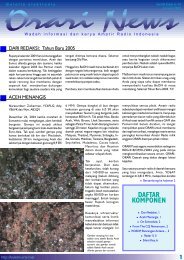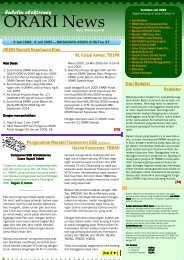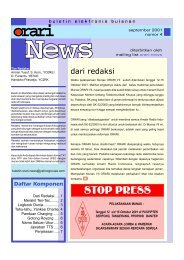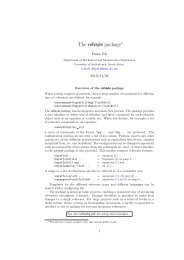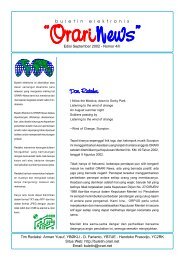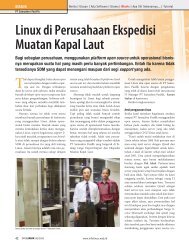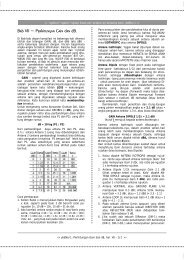Create successful ePaper yourself
Turn your PDF publications into a flip-book with our unique Google optimized e-Paper software.
that a tube that has been in service for an appreciable length of<br />
time may deliver less output than it did when it was new. Varying<br />
the dc screen voltage on a tetrode is an excellent method for<br />
varying output power and is employed for maintaining a fixed<br />
power requirement; as a given tube ages and loses emission from<br />
the filament its output power will decline. Compensating for losses<br />
over time is easily accomplished by using a voltage source for<br />
the screen that is adjustable by means of a closed-loop regulator<br />
system. If one wishes to calculate tube performance of a tetrode<br />
at screen voltages other than those at which the constant current<br />
curves were taken, a compensating factor using the three-halves<br />
power law can be employed (see sec 6.4). To account for loss of<br />
output over time a good designer will choose a tube that has output<br />
power capabilities well above the specified requirement, using as<br />
much conservatism as practicable. In the case of the 4CX20,000A/<br />
8990 in FM broadcast service actual tube life of 20,000 to 40,000<br />
hours is common, indicating this tube is a good choice for supplying<br />
rf power from approx. 20 to 30 kiloWatts in continuous commercial<br />
service.<br />
3.2.4 Use of EIMAC <strong>Tube</strong> Performance Computer for<br />
Class A, AB, and B Service<br />
While the EIMAC <strong>Tube</strong> Performance Computer is primarily<br />
designed for use in Class C service, it may be used for Class A,<br />
AB, and B service where the idling (quiescent) anode current is not<br />
zero. To calculate performance for operating conditions having a<br />
large order of idling anode current, the anode current flow during<br />
the positive half of the anode voltage swing becomes appreciable<br />
and cannot be ignored. When the tube functions over 180 degrees<br />
or more of the operating cycle, a full set of ordinate points must be<br />
employed for the computations. The computer is therefore used in<br />
a two-step process.<br />
First, determine the operating line. The computer is used in the<br />
normal fashion to derive the instantaneous values of anode,<br />
screen, and grid current during the negative half of the anode<br />
voltage swing. These current points are logged as explained under<br />
the Class C service description.<br />
Now, determine the instantaneous current points over the positive<br />
portion of the anode voltage cycle. Combine these with the points<br />
taken for the negative half of the cycle. This is done in the following<br />
fashion: a line is penciled on the computer over the operating line,<br />
and of equivalent length. The computer is now inverted and rotated<br />
180° and again aligned with the chosen operating line on the<br />
constant current curve, so that inverted point G falls on the idling<br />
43




